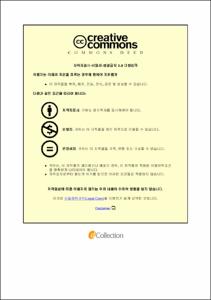Ulsan Univ. Repository
Thesis
General Graduate School
Computer Engineering & Information Technology
2. Theses (Ph.D)
Human vascular tissue fabrication using the co-culture of vascular cells
- Abstract
- Using a microfluidic-based core-shell nozzle, human umbilical vein endothelial cells (HUVECs) and human aortic smooth muscle cells (HASMCs) were coaxially and continuously printed without ultraviolet light. The core material was Type I collagen (3 mg/ml) including HUVECs and a crosslinking reagent (100 mM CaCl2). Simultaneously, a blend of 3 mg/ml type I collagen (25%) and 1.8 percent weight/volume sodium alginate (75%) was used as a shell material around the core. The HUVECs proliferated in the scaffold's core and reorganized themselves into a monolayer along the axial direction while the HASMCs showed more than 90% cell viability in the shell layer. Using an in-house micro connector, fluorescent microparticles were fed through the inner channel of the scaffold with the HUVEC core and HASMC shell. In growth factor-free media, this double-layered scaffold demonstrated more angiogenesis than the scaffold with simply a HUVEC core. Angiogenesis, extracellular matrix secretion, and outer diameter were all altered by the HASMCs in the shell layer. The developed method might be used to produce high-volume vascularized tissue using three-dimensional bioprinting.
- Issued Date
- 2022
- Awarded Date
- 2022-02
- Type
- dissertation
- Affiliation
- 울산대학교
- Department
- 일반대학원 전기전자컴퓨터공학과
- Advisor
- 구교인
- Degree
- Doctor
- Publisher
- 울산대학교 일반대학원 전기전자컴퓨터공학과
- Language
- eng
- Rights
- 울산대학교 논문은 저작권에 의해 보호 받습니다.
- Appears in Collections:
- Computer Engineering & Information Technology > 2. Theses (Ph.D)
- 파일 목록
-
-
Download
 200000605406.pdf
기타 데이터 / 4.17 MB / Adobe PDF
200000605406.pdf
기타 데이터 / 4.17 MB / Adobe PDF
-
Items in Repository are protected by copyright, with all rights reserved, unless otherwise indicated.